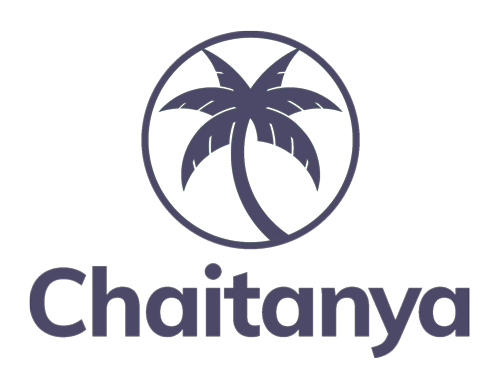May 26, 2023
Introduction
Microfinance, a financial service that provides small loans and other financial services to low-income individuals and communities, has gained significant attention in recent years. Originating from the idea that access to credit can empower individuals and alleviate poverty, microfinance institutions have emerged as powerful catalysts for economic development.
This article explores the impact of microfinance, highlighting how small loans can make a big difference in the lives of the underserved population.
Economic Empowerment:
Microfinance plays a crucial role in empowering individuals to break free from the cycle of poverty. By providing small loans, microfinance institutions enable entrepreneurs and small business owners to start or expand their businesses. These loans can be used to purchase inventory, equipment, or raw materials, thus increasing production and income-generating opportunities. As a result, borrowers can improve their financial stability, support their families, and contribute to local economic growth.
a) Job Creation: A study conducted by the International Finance Corporation (IFC) revealed that microfinance loans have contributed to the creation of approximately 4.3 million jobs globally.
b) Income Generation: The Consultative Group to Assist the Poor (CGAP) reports that microfinance borrowers experience an average income increase of 20% within the first year of receiving a loan.
Poverty Alleviation:
One of the primary goals of microfinance is poverty alleviation. By granting access to credit, microfinance institutions enable individuals to invest in income-generating activities and improve their standard of living. Small loans allow borrowers to invest in education, healthcare, housing, and other basic needs. This, in turn, reduces their vulnerability to economic shocks and enhances their ability to withstand financial hardships. Moreover, as borrowers succeed in their entrepreneurial endeavors, they often create job opportunities for others in their communities, fostering economic growth and poverty reduction.
- According to the Microfinance Barometer, microfinance institutions reached an estimated 140 million clients worldwide by the end of 2020, indicating the scale of its impact. The World Bank reported that microfinance programs successfully lifted approximately 100 million people out of poverty between 2005 and 2019.
Women Empowerment:
Microfinance has shown tremendous potential in empowering women and promoting gender equality. Women, who traditionally face more significant barriers in accessing financial services, can greatly benefit from microloans. As women become successful entrepreneurs, they gain financial independence, decision-making power, and a stronger voice within their households and communities. This empowerment contributes to breaking gender stereotypes, reducing gender disparities, and fostering inclusive development.
- A study by the United Nations Capital Development Fund (UNCDF) found that women comprise approximately 80% of microfinance clients globally.
- According to the Global Microscope on Financial Inclusion, gender-focused microfinance programs have contributed to closing the gender gap in financial inclusion, allowing women to become more active economic participants.
Social Impact:
Beyond the economic benefits, microfinance has a profound social impact on the communities it serves. By promoting financial inclusion, microfinance institutions extend banking services to populations that have traditionally been excluded from the formal financial sector. This, in turn, enhances financial literacy and promotes savings habits among borrowers. Moreover, microfinance programs often incorporate educational and capacity-building components, providing borrowers with valuable knowledge and skills in financial management, entrepreneurship, and other relevant areas. These programs create a ripple effect, as empowered individuals become agents of change within their communities, sharing their knowledge and inspiring others to pursue their dreams.
a) Education: According to a study conducted by the Consultative Group to Assist the Poor (CGAP), children from households with microfinance loans were 10% more likely to attend school regularly compared to those without access to microfinance.
b) Healthcare: The World Bank reports that microfinance has contributed to improved healthcare access, leading to a 13% increase in health-related expenditures among borrowers.
Repayment Rates and Sustainability:
Contrary to common misconceptions, microfinance has demonstrated remarkable repayment rates, often outperforming traditional lending institutions. The close-knit nature of microfinance programs, with borrowers forming solidarity groups or joining lending circles, creates social pressure and peer support, incentivizing timely loan repayments. Additionally, microfinance institutions employ careful screening and risk assessment techniques to ensure borrowers’ creditworthiness and minimize default rates. The sustainability of microfinance lies in the continuous recycling of loan funds, as repaid amounts are disbursed to new borrowers, fostering a self-replenishing cycle of economic empowerment.
a) According to the Microfinance Information Exchange (MIX), the average global repayment rate for microfinance loans in 2020 was approximately 96.3%.
b) A study published in the American Economic Journal found that borrowers who had access to microfinance were more likely to repay their loans compared to those without access, challenging the notion of higher default rates among low-income borrowers.
Let’s see how How Small Loans Can Make a Big Difference
The impact of small loans through microfinance programs cannot be underestimated. These seemingly modest financial resources have the power to make a big difference in the lives of individuals and communities. Small loans provide economic empowerment, allowing borrowers to start or expand businesses, increase income, and improve their financial stability. This, in turn, contributes to poverty alleviation and economic growth, creating a ripple effect within communities.
Microfinance also has a broader social impact, promoting financial inclusion and enhancing financial literacy among marginalized populations. By extending banking services to those excluded from the formal financial sector, microfinance programs cultivate savings habits, improve money management skills, and provide opportunities for personal and professional development.
Furthermore, the sustainability of microfinance lies in its repayment rates and the continuous recycling of loan funds. Through careful risk assessment and the formation of solidarity groups, microfinance institutions ensure high repayment rates, fostering a self-replenishing cycle of empowerment.
In essence, small loans through microfinance programs unlock the potential of individuals, offering a pathway out of poverty, creating opportunities for growth, and fostering social and economic progress. By addressing the specific needs of the underserved population, microfinance demonstrates that even small financial resources can have a profound and lasting impact on individuals, families, and communities, paving the way for a more inclusive and prosperous future.
Conclusion:
Microfinance has emerged as a powerful tool for poverty alleviation, economic empowerment, and social change. By providing small loans and financial services to the underserved population, microfinance institutions unlock the potential of individuals, particularly women, to create businesses, generate income, and improve their quality of life. Through its multifaceted impact, microfinance promotes financial inclusion, increases financial literacy, and fosters economic and social development. As microfinance continues to evolve and innovate, its potential for making a big difference in the lives of the marginalized and underserved remains significant, offering hope for a more inclusive and equitable future.

